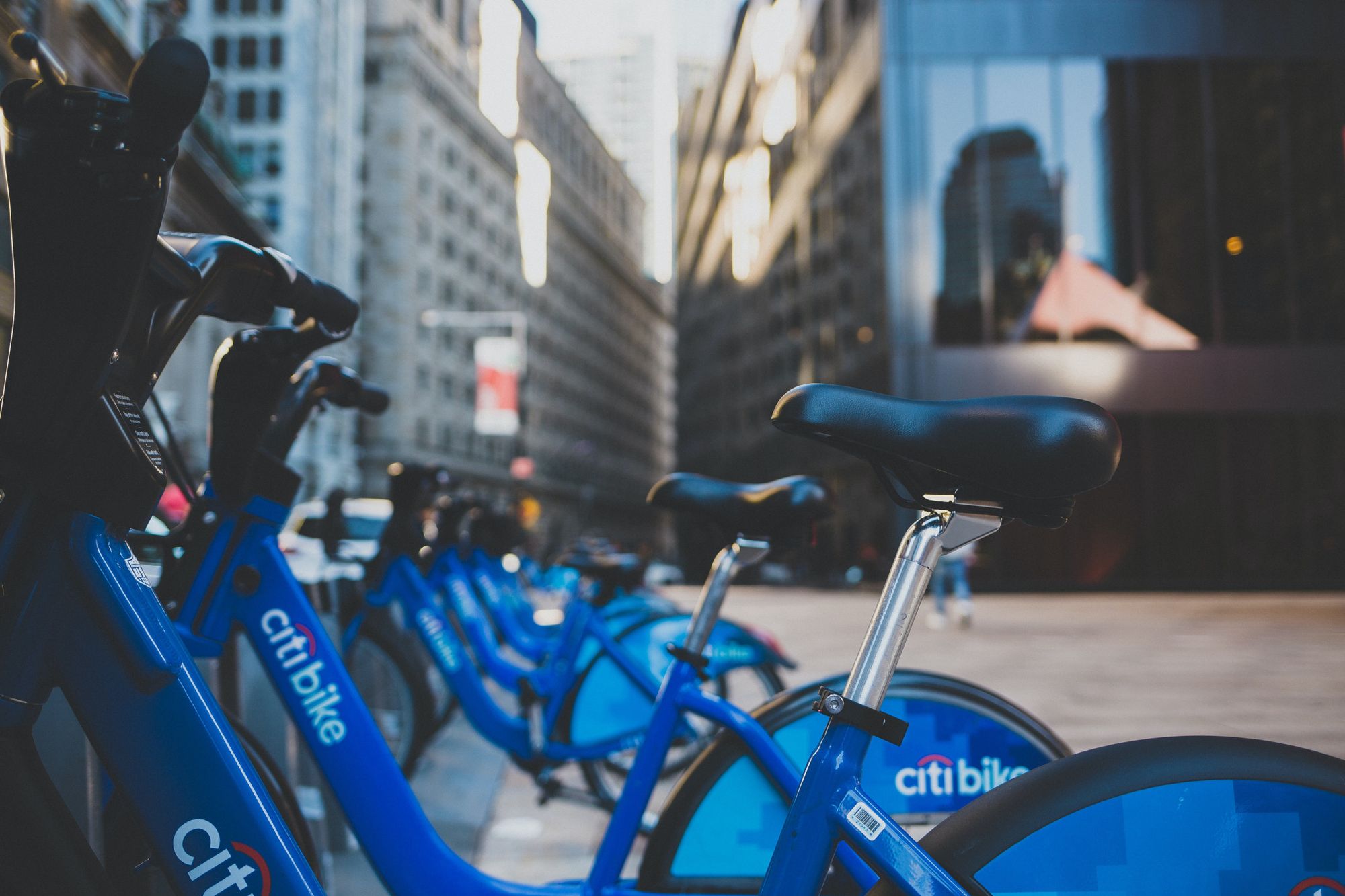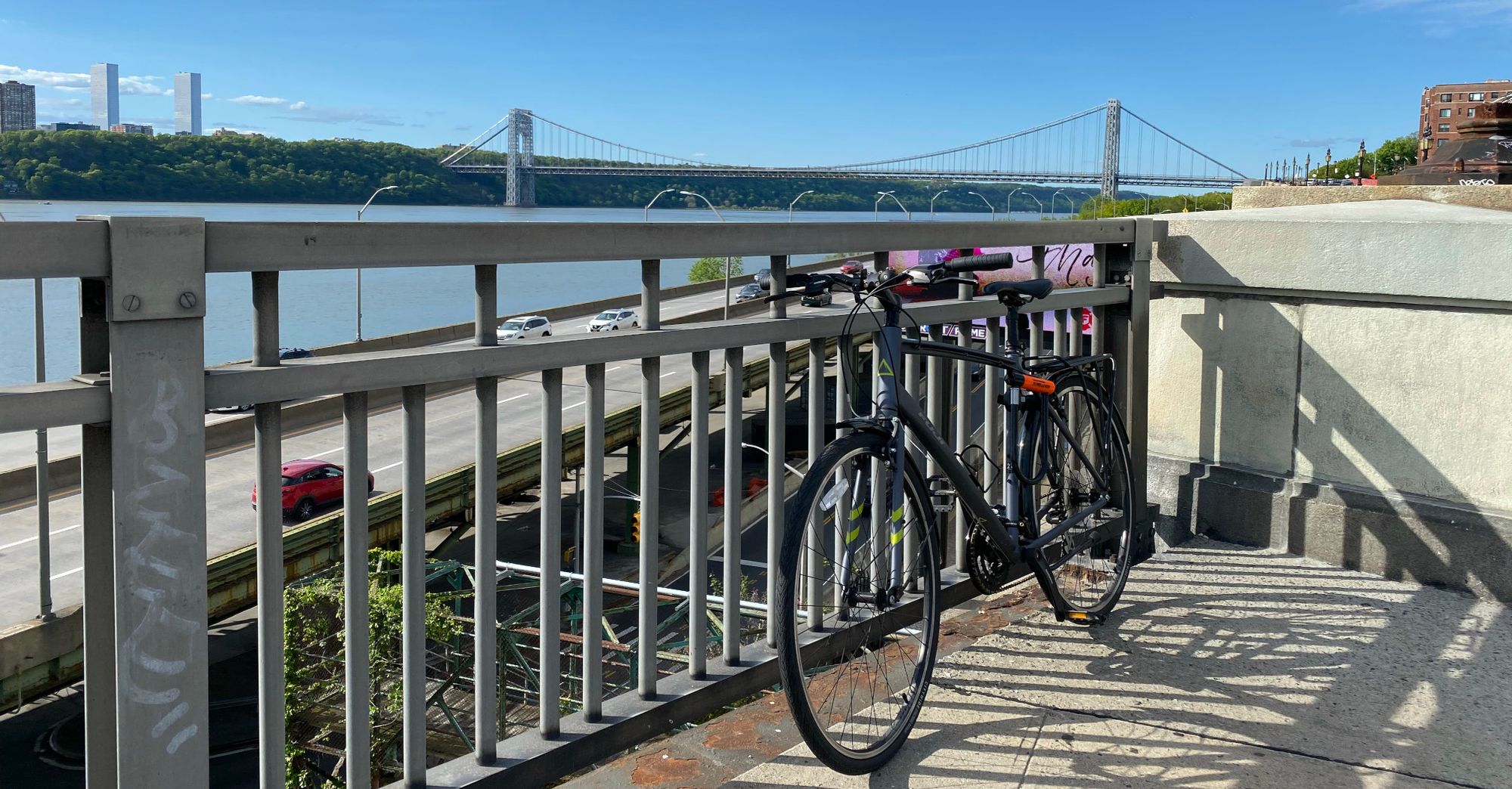Falling in Love with Biking in NYC

If you've met me at some point since I moved to NYC, you might be a bit surprised to learn that I was not a huge fan of biking before moving here. As a kid growing up in the mostly car oriented suburbs (not in NYC), biking was a fun sport activity where your family and friends would throw a bunch of bikes in the trunk of someone's minivan, drive to a bike trail, and spend a few hours getting some exercise in nature. The only problem was that as a kid, I was really not a fan of exercise. This meant I didn't really learn how to ride a bike until I turned 12 or 13, and even then I rarely rode one since by that point my only friends who were still biking were going out on mountain bike trails that I wasn't comfortable riding.
Through college, it didn't make sense to own a bike. The town my college was in and the school's campus were small enough to walk around comfortably, and everything else required a car anyway. Grad school was the first time I lived somewhere with vaguely functional bike infrastructure, and I had since become a fan of exercise, but it definitely felt too late to get comfortable riding a bike when I had so many other options available. The few times I tried out friends' bikes, they weren't nearly stable enough for me to feel comfortable as a novice rider on a road with cars and potholes. To make matters worse, most folks who rode around town regularly were pretty intense, and their stories of near-death misses didn't make me feel like it was something regular people could do.
Enter Citibike

After living for a year in NYC, I had started to think about trying to occasionally commute to work by bike. Unlike grad school, I had coworkers who seemed more like regular people who biked to work. Other than a few folks with trips longer than 10 miles, almost nobody bothered wearing special bike gear. I get my MetroCard for free through work, but the subway doesn't go everywhere and bus service was especially slow in 2016/2017. The promise of Citibike is that it can fill in the gaps that aren't conveniently served by the subway, or even replace them if you don't feel like walking or taking the train.
My wife and I decided to rent a couple Citibikes and biked all the way to my office and back. A few things stood out to me:
- The Hudson greenway is a national treasure, but way too narrow (and that was in 2016! It's way more crowded now)
- Citibikes are so stable that even novice riders can feel pretty comfortable
- Citibikes are really heavy (45 lb!)
As soon as we got home I subscribed to an annual membership and have had one ever since. Even after purchasing my own wheels, it's handy for getting around the city to be able to combine Citibike with the bus or subway. As long as the stations are in the right place, a 20 minute walk can take 5-10 minutes, which can make the difference between catching a train or having to wait on the platform.
I stuck with just the Citibike subscription in my first apartment. The apartment was on the 4th floor of a walk-up and tiny, and at the time I was worried about leaving a bike on the street. Thankfully, my next apartment had secure bike parking.
Buying a Bike

To get a better deal on rent, my wife and I moved further away from my office. A commute that was already a hard workout on a Citibike became a bit more difficult than I really wanted it to be. This was before the bike shortage brought on by COVID, so I went to a local-ish bikeshop (https://masterbikeshop.com/) that had good reviews online to see if I could buy a bike. I had budgeted about $600 at the time, and despite the store's focus on higher end road bikes, the owner actually talked me down to a Fuji Absolute 2.1 that cost about $280 from the store. Buying it online and assembling it myself would have saved about $100 at the time, but I was happy to get it pre-built.
After a couple years of riding Citibikes, the new lighter frame and skinnier wheels felt pretty unsteady at first. I was definitely much faster, but the aluminum frame transferred the bumps on the road into my body much more than the heavy steel I was used to. I didn't purchase a rack at first either, and I missed having a front rack to dump my backpack into.
The biggest issue though was that when riding a Citibike announced to drivers that they should give me a wide berth. For better or worse, they're associated with less practiced riders. Once I was riding my own bike, particularly if I had a helmet and athletic clothes on, I noticed the drivers behind me were a lot less patient, and passed with a lot less clearance.
Biking is Freedom
There are a lot of things to like about bike share services. It's easy to ride it one way if you are meeting up with friends who don't bike, it's great to not worry about maintenance, and it's comforting to not worry about theft. That said, for running errands with multiple stops, needing to find a dock at each stop gets frustrating. It wasn't till I got my own bike that I really understood what people meant when they say biking is freedom.
I had seen all the Isochrone maps showing how much further one can travel on bike than by walking, but it wasn't really until 15 minute walks to go out for lunch or groceries turned into 4 minute rides that I really understood. Putting groceries in panniers on the back of my bike in the heat of the summer means ice cream doesn't melt before getting home, and means I end up dramatically less sweaty than I would walking with 20 lbs grocery bags. A quick trip to get a bagel in the morning only takes 5 minutes instead of 15.
Furthermore, I didn't appreciate how much I would be able to engage with the neighborhoods I was biking in before I started using two wheels to get around. In a car or (fast-moving) bus passing through a neighborhood, the details go by too quickly to notice. As much as I love the subway, it passes under or over the streets instead. On a bike though, if I see something cool, I can slow down and stop for a pastry or listen to an impromptu band playing in the park whenever I want. That's true as a pedestrian too, and if I'm exploring a new area, I'll often slow way down or lock up my bike and check it out on foot.
There's no real conclusion here, I appreciate that biking is not for everyone. It's tough to feel comfortable biking on streets with large SUVs honking at you. While there are a lot of options for folks who can't use traditional bikes, especially now that lithium ion batteries and small electric motors have enabled a lot of new options for getting around, bikes are only as good as the infrastructure that supports them. In the same way that getting my license represented freedom living in the suburbs, owning a bike in a neighborhood and city with decent bike infrastructure is also freedom. It's a luxury that not everyone has, but unlike highways and parking lots, painting bike lanes and installing concrete barriers is cheap, at least financially. The hard part is that in cities already set up for cars, removing their privilege is hard, even if building the infrastructure isn't.